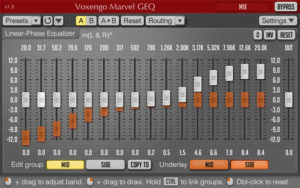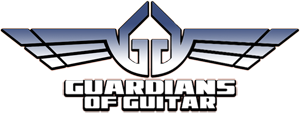
Yeah. I know. Everyone has a home studio and everyone is a brilliant producer and everyone is a crafty and talented audio engineer. Good on us. And yet, EQ remains one of the most overused— and likely “misused”—elements of the recording and mixing processes. In fact, aggressive tone tweaks will likely serve to tank your mix and befoul the glories of your fabulous song. So let’s make sure that you DO know all that you should know about applying EQ. A little “freshen up” of your knowledge here may help you deliver truly stellar mixes.
Know Your Neighborhood
Having some idea about which frequencies deliver the benefits you are seeking is critical to success. Frequency-range charts are available all over the web, but here are a few tonal benchmarks.
Fundamental Guitar Frequencies: 100Hz-2kHz
Guitar Harmonics: 2kHz- 10kHz
Boom: 100Hz-200Hz
Warmth: 150Hz-250Hz
Honk: 500Hz-1kHz
Whack: 1kHz-2kHz
Crunch: 2kHz-4kHz
Edge: 4kHz-6kHz
Sibilance: 4kHz-10kHz
Shimmer: 10kHz-12kHz.
Cut First
Guitarists love to crank things up, but it’s not always beneficial to boost frequencies. EQ boosts not only affect selected frequencies, they also increase signal levels. Go too crazy, and you risk clipping, distortion, and other unpleasant artifacts. Before you dime the EQ knobs, consider if an EQ cut will serve to clarify a part, or help it sit in the mix better. For example, if an acoustic guitar part is getting lost in the roar of the band, cut some low- or low-mid frequencies (100Hz-500Hz) to diminish muddiness. The result should be a much more musical timbre than what you’d get with an aggressive frequency boost.
Look Downstream
Now that we’ve learned belligerent EQ boosts can pump up signal levels, you should also be aware of the cleanliness of your entire signal chain. Many mixes tend to fail due to muddy, indistinct, and/or brittle sonic spectrums. Dynamic interest is nil, and the listener’s ears are “treated” to the aural equivalent of pigging-out on bananas until your tummy is about to explode. So, when you add effects and compression and overdubs, be vigilant that every element in the signal chain is clean and clear. The more stuff you toss into the mix, the more alert you’ll need to be. In other words, fiercely boosting EQ on a guitar-compressor-chorus-delay-reverb signal chain could be a recipe for unwanted distortion, as the boosted guitar EQ might overdrive the reverb plug-in (or the chorus, delay, and compressor).
Don’t Solo
Don’t be that person who solos a track and spends hours dialing in EQ tweaks. This activity is more often than not an absurd waste of time because, unless you’re recording solo instruments sans effects, no sound exists in isolation. For example, let’s say you proudly crafted the perfect midrange snap on a soloed snare track. When the snare is returned to the stereo spectrum, however, you may find your “perfect” attack devoured by overdriven rhythm guitars and a pummeled ride cymbal. It’s best to make critical EQ adjustments while listening to all the tracks simultaneously.
Freeze!
Sometimes, the best application of EQ is none at all. Your source sound may already be awesome, and you’ll just mess everything up with indiscriminate tone shaping. Remember—critical listening trumps bad habits, so keep your hands off the EQ controls unless frequency adjustments are absolutely necessary.


Thanks for the tips